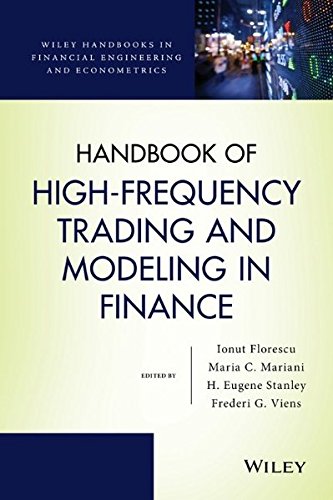High-frequency data in finance is often characterized by fast fluctuations and noise (see, e.g., [7]), a trait that is known to make the volatility of the data very hard to estimate (see, e.g., [13]). Although this characteristic creates many challenges in modeling, it offers itself to the study of distin- guishing “signal” from “noise,” a topic of interest in the area of quickest detection (see [25], [5]). One of the most popular algorithms used in quick- est detection is known as the cumulative sum (CUSUM) stopping rule first introduced by Page [24]. In this work, we employ a sequence of CUSUM stopping rules to construct an online trading strategy. This strategy takes advantage of the relatively frequent number of alarms CUSUM stopping times may provide when applied to high-frequency data as a result of the fast fluctuations present therein. The trading strategy implemented settles frequently and thus eliminates the risk of large positions
چکیده فارسی
دادههای با بسامد بالا در امور مالی اغلب با نوسانات سریع و نویز مشخص میشوند (به عنوان مثال، [7] مراجعه کنید)، ویژگیای که مشخص است تخمین بیثباتی دادهها را بسیار سخت میکند (به عنوان مثال، [13] را ببینید. ]). اگرچه این ویژگی چالشهای زیادی را در مدلسازی ایجاد میکند، اما خود را به مطالعه تشخیص «سیگنال» از «نویز»، موضوعی مورد علاقه در حوزه سریعترین تشخیص، ارائه میکند (نگاه کنید به [25]، [5]). یکی از محبوبترین الگوریتمهای مورد استفاده در سریعترین تشخیص، به عنوان قانون توقف مجموع تجمعی (CUSUM) شناخته میشود که اولین بار توسط صفحه [24] معرفی شد. در این کار، ما از دنباله ای از قوانین توقف CUSUM برای ایجاد یک استراتژی تجارت آنلاین استفاده می کنیم. این استراتژی از تعداد نسبتاً مکرر آلارمهایی که زمان توقف CUSUM ممکن است هنگام اعمال بر دادههای فرکانس بالا در نتیجه نوسانات سریع موجود در آن ایجاد کند، بهره میبرد. استراتژی معاملاتی اجرا شده به طور مکرر تسویه می شود و بنابراین خطر موقعیت های بزرگ
را از بین می برد
ادامه ...
بستن ...
Author(s): Ionut Florescu, Maria C. Mariani, H. Eugene Stanley, Frederi G. Viens (eds.)
Series: Wiley Handbooks in Financial Engineering and Econometrics
Publisher: Wiley, Year: 2016
ISBN: 1118443985,9781118443989
ادامه ...
بستن ...
vi Contents
3 A Nonlinear Lead Lag Dependence Analysis of Energy
Futures: Oil, Coal, and Natural Gas 61
Germ ́an G. Creamer and Bernardo Creamer
3.1 Introduction 61
3.1.1 Causality analysis 62
3.2 Data 64
3.3 Estimation techniques 64
3.4 Results 65
3.5 Discussion 67
3.6 Conclusions 69
Acknowledgments 69
References 70
4 Portfolio Optimization: Applications in Quantum
Computing 73
Michael Marzec
4.1 Introduction 73
4.2 Background 75
4.2.1 Portfolios and optimization 76
4.2.2 Algorithmic complexity 77
4.2.3 Performance 78
4.2.4 Ising model 79
4.2.5 Adiabatic quantum computing 79
4.3 The models 80
4.3.1 Financial model 81
4.3.2 Graph-theoretic combinatorial optimization
models 82
4.3.3 Ising and Qubo models 83
4.3.4 Mixed models 84
4.4 Methods 84
4.4.1 Model implementation 85
4.4.2 Input data 85
4.4.3 Mean-variance calculations 85
4.4.4 Implementing the risk measure 86
4.4.5 Implementation mapping 86
4.5 Results 88
4.5.1 The simple correlation model 88
4.5.2 The restricted minimum-risk model 91
4.5.3 The WMIS minimum-risk, max return model 94
Contents vii
4.6 Discussion 95
4.6.1 Hardware limitations 97
4.6.2 Model limitations 97
4.6.3 Implementation limitations 98
4.6.4 Future research 98
4.7 Conclusion 100
Acknowledgments 100
Appendix 4.A: WMIS Matlab Code 100
References 103
5 Estimation Procedure for Regime Switching Stochastic
Volatility Model and Its Applications 107
Ionut Florescu and Forrest Levin
5.1 Introduction 107
5.1.1 The original motivation 108
5.1.2 The model and the problem 108
5.1.3 A brief historical note 109
5.2 The methodology 110
5.2.1 Obtaining filtered empirical distributions at
t1 , ... , t T 110
5.2.2 Obtaining the parameters of the Markov chain 112
5.3 Results obtained applying the model to real data 113
5.3.1 Part i: financial applications 113
5.3.2 Part ii: physical data application. temperature
data 119
5.3.3 Part iii: analysis of seismometer readings
during an earthquake 121
5.3.4 Analysis of the earthquake signal: beginning 123
5.3.5 Analysis: during the earthquake 125
5.3.6 Analysis: end of the earthquake signal,
aftershocks 127
5.4 Conclusion 127
5.A Theoretical results and empirical testing 128
5.A.1 How does the particle filter work? 128
5.A.2 Theoretical results about convergence and
parameter estimates 129
5.A.3 Markov chain parameter estimates 131
5.A.4 Empirical testing 132
5.A.5 A list of supplementary documents 133
References 133
viii Contents
6 Detecting Jumps in High-Frequency Prices Under
Stochastic Volatility: A Review and a Data-Driven
Approach 137
Ping-Chen Tsai and Mark B. Shackleton
6.1 Introduction 137
6.2 Review on the intraday jump tests 140
6.2.1 Realized volatility measure and the BNS tests 140
6.2.2 The ABD and LM tests 142
6.3 A data-driven testing procedure 146
6.3.1 Spy data and microstructure noise 146
6.3.2 A generalized testing procedure 149
6.4 Simulation study 153
6.4.1 Model specification 153
6.4.2 Simulation results 158
6.5 Empirical results 161
6.5.1 Results on the backward-looking test 162
6.5.2 Results on the interpolated test 165
6.6 Conclusion 165
Acknowledgments 166
Appendix 6.A: Least-square estimation of HAR-MA (2)
model for log(BP) of SPY 167
Appendix 6.B: Estimation of ARMA (2, 1) model for
log(BP) of SPY 168
Appendix 6.C: Minimized loss function loss(𝜌1 , 𝜌2 ) for
SV2FJ_2𝜌 model, SPY 169
Appendix 6.D.1: Calibration of 𝜉 under SV2FJ_2𝜌 model at
2-min frequency, E[Nt] = 0.08 170
Appendix 6.D.2: Calibration of 𝜉 under SV2FJ_2𝜌 model at
2-min frequency, E[Nt] = 0.40 171
Appendix 6.D.3: Calibration of 𝜉 under SV2FJ_2𝜌 model at
5-min frequency, E[Nt] = 0.08 172
Appendix 6.D.4: Calibration of 𝜉 under SV2FJ_2𝜌 Model at
5-min frequency, E[Nt] = 0.40 173
Appendix 6.D.5: Calibration of 𝜉 under SV2FJ_2𝜌 model at
10-min frequency, E[Nt] = 0.08 174
Appendix 6.D.6: Calibration of 𝜉 under SV2FJ_2𝜌 model at
10-min frequency, E[Nt] = 0.40 175
References 175
Contents ix
7 Hawkes Processes and Their Applications to
High-Frequency Data Modeling 183
Baron Law and Frederi G. Viens
7.1 Introduction 183
7.2 Point processes 184
7.3 Hawkes processes 186
7.3.1 Branching structure representation 188
7.3.2 Stationarity 188
7.3.3 Convergence 189
7.4 Statistical inference of Hawkes processes 191
7.4.1 Simulation 191
7.4.2 Estimation 194
7.4.3 Hypothesis testing 197
7.5 Applications of Hawkes processes 198
7.5.1 Modeling order arrivals 199
7.5.2 Modeling price jumps 200
7.5.3 Modeling jump-diffusion 205
7.5.4 Measuring endogeneity (Reflexivity) 205
Appendix 7.A: Point Processes 207
7.A.1 Definition 207
7.A.2 Moments 208
7.A.3 Marked point processes 209
7.A.4 Stochastic intensity 209
7.A.5 Random time change 211
Appendix 7.B: A Brief History of Hawkes processes 211
References 212
8 Multifractal Random Walk Driven by a Hermite Process 221
Alexis Fauth and Ciprian A. Tudor
8.1 Introduction 221
8.2 Preliminaries 224
8.2.1 Fractional brownian motion and hermite
processes 224
8.2.2 Wiener integrals with respect to the hermite
process 226
8.2.3 Infinitely divisible cascading noise 229
8.3 Multifractal random walk driven by a Hermite process 231
8.3.1 Definition and existence 231
8.3.2 Properties of the hermite multifractal random
walk 233
x Contents
8.4 Financial applications 234
8.4.1 Simulation of the Hmrw 235
8.4.2 Financial statistics 241
8.5 Concluding remarks 243
References 247
9 Interpolating Techniques and Nonparametric Regression
Methods Applied to Geophysical and Financial Data
Analysis 251
K. Basu and Maria C. Mariani
9.1 Introduction 251
9.2 Nonparametric regression models 253
9.2.1 Local polynomial regression 255
9.2.2 Lowess/loess method 257
9.2.3 Numerical applications 259
9.3 Interpolation methods 271
9.3.1 Nearest-neighbor interpolation 271
9.3.2 Bilinear interpolation 272
9.3.3 Bicubic interpolation 276
9.3.4 Biharmonic interpolation 277
9.3.5 Thin plate splines 282
9.3.6 Numerical applications 285
9.4 Conclusion 287
Acknowledgments 292
References 292
10 Study of Volatility Structures in Geophysics and Finance
Using Garch Models 295
Maria C. Mariani, F. Biney, and I. SenGupta
10.1 Introduction 295
10.2 Short memory models 297
10.2.1 ARMA(p,q) model 297
10.2.2 GARCH(p,q) model 297
10.2.3 IGARCH(1,1) model 298
10.3 Long memory models 298
10.3.1 ARFIMA(p,d,q) model 299
10.3.2 ARFIMA(p,d,q)-GARCH(r,s) 299
10.3.3 Intermediate memory process 300
10.3.4 Figarch model 300
Contents xi
10.4 Detection and estimation of long memory 302
10.4.1 Augmented dickey–fuller test(ADF test) 302
10.4.2 KPSS test 303
10.4.3 Whittle method 304
10.5 Data collection, analysis, and result 306
10.5.1 Analysis on dow Jones index (DJIA)
returns 306
10.5.2 Model selection and specification:
conditional mean 306
10.5.3 Conditional mean model (returns) 309
10.5.4 Model diagnostics: ARMA(2, 2) 309
10.5.5 Test for ARCH effect 311
10.5.6 Model selection and specification:
Conditional variance 313
10.5.7 Standardized residuals test 314
10.5.8 Model diagnostics 314
10.5.9 Returns and variance equation 315
10.5.10 standardized residuals test 317
10.5.11 Model diagnostic of conditional returns
with conditional variance 318
10.5.12 One-step ahead prediction of last 10
observations 330
10.5.13 Analysis on high-frequency, earthquake,
and explosives series 330
10.6 Discussion and conclusion 335
References 337
11 Scale Invariance and L ́evy Models Applied to
Earthquakes and Financial High-Frequency Data 341
M. P. Beccar-Varela, Ionut Florescu, and I. SenGupta
11.1 Introduction 341
11.2 Governing equations for the deterministic model 342
11.2.1 Application to geophysical (earthquake
data) 343
11.2.2 Results 344
11.3 L ́evy flights and application to geophysics 345
11.3.1 Truncated L ́evy flight distribution 353
11.3.2 Results 356
xii Contents
11.4 Application to the high-frequency market data 360
11.4.1 Methodology 360
11.4.2 Results 361
11.5 Brief program code description 362
11.6 Conclusion 364
11.A Appendix 366
11.A.1 Stable distributions 366
11.A.2 Characterization of stable distributions 367
References 368
12 Analysis of Generic Diversity in the Fossil Record,
Earthquake Series, and High-Frequency Financial Data 371
M. P. Beccar Varela, F. Biney, Maria C. Mariani, I. SenGupta,
M. Shpak, and P. Bezdek
12.1 Introduction 371
12.2 Statistical preliminaries and results 373
12.2.1 Sum of exponential random variables with
different parameters 374
12.3 Statistical and numerical analysis 377
12.4 Analysis with L ́evy distribution 380
12.4.1 Characterization of Stable Distributions 383
12.4.2 Truncated L ́evy flight (TLF) distribution 384
12.4.3 Data analysis with TLF distribution 389
12.4.4 Sum of L ́evy random variables with
different parameters 390
12.5 Analysis of the Stock Indices, high-frequency (tick)
data, and explosive series 394
12.6 Results and discussion 409
Acknowledgments 421
12.A Appendix A—Big ‘O’ notation 421
References 422
Index 425
ادامه ...
بستن ...










